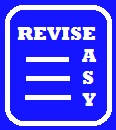CYP Core 3.2 : Promote child and young person development
Level 3 Children & Young People's Workforce
When practitioners are assessing children's development, it is important to consider some factors such as children's age, ability, personality, their physical well-being, sensory impairment, culture and language.
- Disability
- Ethnicity / culture/ language
- Children's wishes and feelings
- Confidentiality
- Reliability of information
Areas of development
| Areas of development | Description | Activities to promote development |
|---|---|---|
| Physical | Fine and gross motor skills movement, balance and coordination. | Threading beads, using scissors, painting, doing jigsaw puzzle
Kicking a ball, jumping, climbing, throwing a ball |
| Communication | Speaking and listening Reading and writing understanding and responding |
nursery rhymes, singing songs, using puppets to promote speech and respond to questions,learning to write own name, asking or answering questions |
| Intellectual | Problem solving numeracy, literacy |
learning the alphabet, reading nursery tales, playing board games: snakes and ladders, ludo,
counting 1-10, Doing jigsaw puzzles |
| Social, emotional and behavioural | Interacting with others Making friends Taking turns Displaying feelings |
Engaing in pretend play, singing nursery rhymes together, dancing, painting or drawing, playing games in groups |
| Moral | Knowing right and wrong understanding acceptable and unacceptable behaviour. |
Giving verbal praise, sticker or stars for good behaviour Using sanctions to discourage bad behaviour e.g time out Reading stories that portray positive behaviour and negative behaviour |
Observational Methods
| Method | Description | Example |
|---|---|---|
| Narrative or descriptive |
Writing everything you see in detail. The data is factual. Recording information continuously for half an hour or one hour. |
Observing child playing with toys or playing with other children. Recording what they say and how they respond to others. |
| Check list | Pre-prepared list of skills or competencies that a child can do. Suitable for checking physical development. |
Threading beads Drawing with crayons or pencil Completing a 10 piece jigsaw puzzle Cutting out shapes with scissors Catching a ball Climbing a frame Riding a bike |
| Time sample | Chart format is used to record specific and selected information at chosen time intervals. | Frequency of playing with certain toys.
Observing children's mood in the mornings or in the afternoons. Observing social behaviour every 15 minutes for 1 hour. Observing behaviour at different play locations in the nursery: every 10 minutes for one hour. Observing behaviour at lunch time: every 5 minutes for half an hour. Observing indoor or outdoor activities every 15 minutes over a period of 1 hour. |
| Event sample | A chart format is used to record specific actions, incident or behaviour observed whenever it occurs. | Observe aggressive behaviour such as spitting, biting or hitting other children. Observe emotional behaviour such as crying or sulking. |
| Identify another method that is used in your setting | Describe another method used in your setting | Can you give an example? |
Understand how working practices can impact on the development of children and young people
Explain how own working practice can affect children and young people's development.
Explain how institutions, agencies and services can affect children and young people's development.
REFERENCES
DFE (2014) Development Matters in the Early Years Foundation Stage (EYFS)
DFE (2014). Statutory framework for the early years foundation stage
DEF(2014). Early years (under 5s) foundation stage framework (EYFS)
DFE (2014) Keeping children safe in Out of hours provisions
DFE(2014) Early Years Outcomes
Parents - guide to EYFS (2014)
What to expect and when (2014)
The British Association for Early Childhood Education
(Supported by DFE)
Every Child Matters 2003)
Effective Pre-school and Primary Education 3-11 Project (2003-2008)
DFE (2008) Effective Pre-School and Primary Education 3-11 Project (EPPE 3-11)
Parliament (2003) Every Child Matters
Tassoni et al (2010) Level 3 Diploma Children and Young People's
Workforce (Early Learning and Childcare). Pearson: Harlow Essex
Caroline Meggit et al (2011) CACHE Level 3 Children and Young People's
Workforce Diploma: Early Learning and Child Care.
Hodder Education: London
www.gov.uk/government/
publications/
2010-to-2015-government-policy-childcare-and-early-education
www.education.gov.uk/publications
www.foundationyears.org.uk.
www.legislation.gov.uk/
www.4children.org.uk
